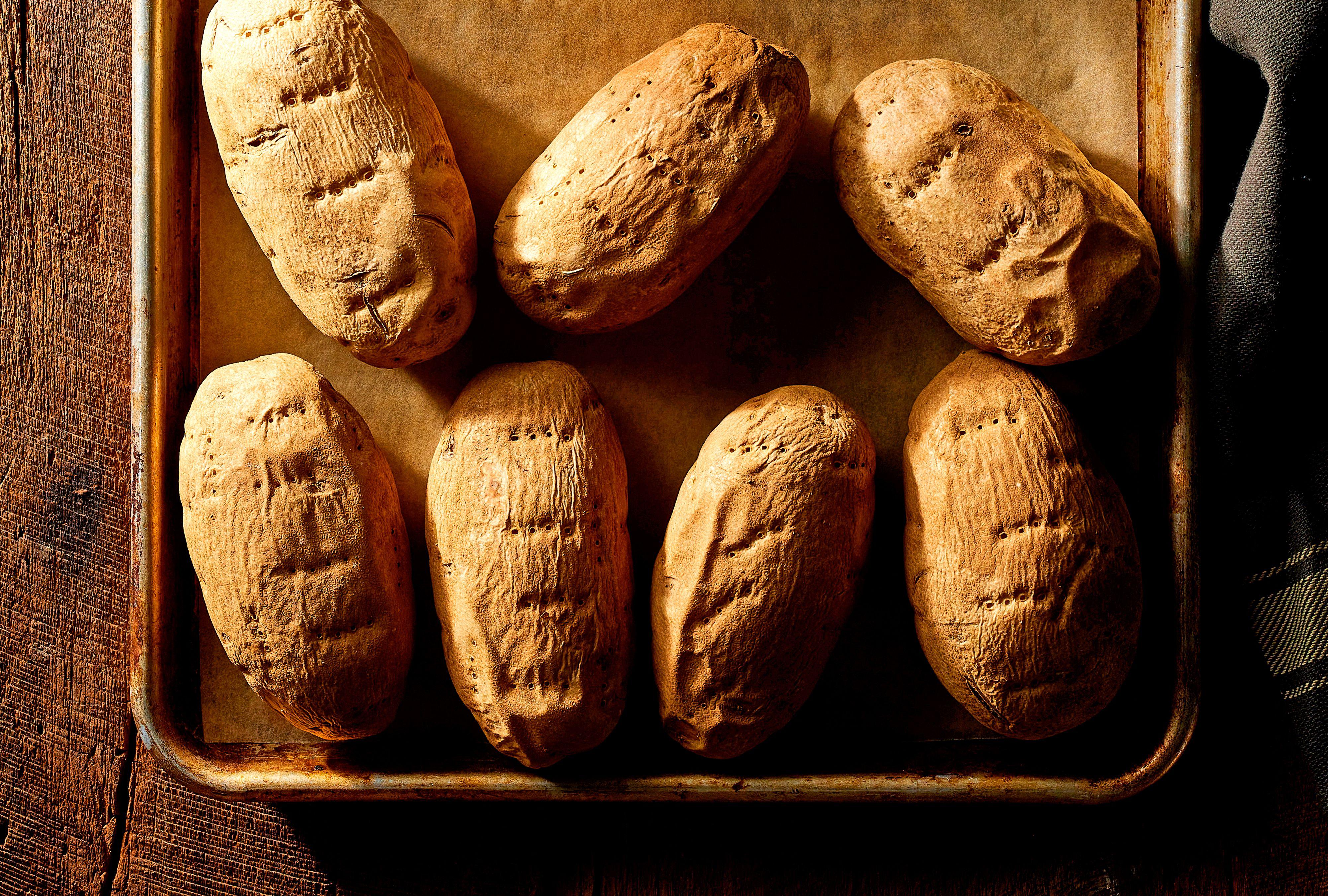It's time to settle the debate: should you wrap baked potatoes in foil? Many swear by it, claiming that restaurants foil-wrap, so why shouldn’t we? Others passionately defend going foil-free, saying it was key for the best consistency. Luckily, we have several chefs on speed dial and was able to ask the experts to help clear up the confusion: “Should you wrap baked potatoes in foil?”
- Jeanette Donnarumma, a recipe developer and Emmy Award-winning producer in Ridgewood, New Jersey
- Dina Deleasa Gonsar, the Whippany, New Jersey-based recipe developer behind Dish It Girl and the author of At the Kitchen Sink
- Juliana Hale, senior brand manager, Better Homes & Gardens Test Kitchen
- Brian Mooney, owner and executive chef of Tre Luna Bar & Kitchen, Tre Luna Catering, Tre Luna & Grocery in Hoover, Alabama
Photo: Carson Downing
The Pros and Cons of Foil-Wrapped Baked Potatoes
At just 14, Juliana Hale Test Kitchen brand manager, fondly recalls her first job at “an old-school inn with a restaurant,” she tells us. There, “the baked potatoes were wrapped in foil, like many steak houses of that era. I think this was maybe because it added some bling to the plate?”
Besides giving the spud a showy jacket, the benefits of wrapping potatoes in foil include:
- Heat retention. If you’re baking a large batch of potatoes for a crowd and are aiming to keep them warm, such as during a dinner party or buffet, “the foil keeps them warm longer and helps prevent the skin from drying out,” notes recipe developer Jeanette Donnarumma.
- Cleanliness. Many of us bake potatoes in the oven or slow cooker. However, “if you are baking them directly on the coals of a fire, wrapping the potatoes in foil is wise because they will stay clean,” Hale says.
- Protection from intense heat. “Baking” potatoes on the grill can expose the skin to some serious heat. To allow the inside to cook fully without burning or charring the skin, it can be helpful to wrap the potatoes in foil.
On the flip side, it’s important to consider the drawbacks of wrapping potatoes in foil before baking:
- It steams the skin. Wrapping potatoes locks in the steam, so “the skins will be soft, and the interior will be soggy, similar to a boiled potato,” Hale tells us. The potato exterior ends up soft and almost leathery, according to Donnarumma, who adds, “if you’re a fan of that crispy, salty, golden-brown jacket on a baked potato (honestly, one of the best parts!), wrapping it in foil is going to do the opposite of that.”
- Food safety. As foil-wrapped baked potatoes cool down, moisture tends to build up between the potato skin and the foil. If the potato falls into the “danger zone” of 40°F and 140°F for an extended period of time, the excess moisture can form a welcome environment for bacteria to grow.
Should You Wrap Baked Potatoes in Foil?
All four food experts we spoke to agree that for most occasions, it’s best to skip the foil. It all boils down to the texture. Baking the potatoes “naked” is key “so they can be crispy on the outside and fluffy on the inside,” Donnarumma says.
“I prefer a crispy, flavorful crust, which is best achieved by baking them uncovered,” says chef Brian Mooney.
There are a few exceptions to this rule, though. It can be wise to wrap potatoes in foil if…
- You’re going for a steamed potato style
- You’re roasting the potatoes directly on the coals of a fire
- You’re grilling the potatoes over high heat
- You need to keep them warm for an extended period of time
Just be sure to unwrap the foil ASAP after cooking or keep foil-wrapped potatoes warm in an environment over 140 °F.
The Best Method For How to Bake Potatoes, According to Chefs
After agreeing on going foil-free in nearly all circumstances, our chefs also had a unanimous response to the best way to bake potatoes. For crispy potato skin and super fluffy and light flesh, follow the lead of Hale, Donnarumma, Mooney, and recipe developer Dina Deleasa Gonsar:
- Preheat the oven to 425° F.
- Under cool running water, use a vegetable brush to scrub the potato clean. Pat the potato dry with a paper towel.
- Using a fork, poke the skin of the potato a few times to allow steam to escape, then rub the surface in olive oil. Season generously with kosher salt.
- Place the potato directly on your oven rack or on a wire rack-lined sheet pan so air can flow around all sides of the potato.
- Bake for 40 to 60 minutes, or until tender. (Exact timing will vary based on size.)
Tip: “You know they are done when a fork easily pierces the skin,” Gonsar says.
Now that you’re a pro at potatoes, let’s talk about how to take them over the top. Butter, fresh chives, and sour cream are always good options. To make your spud more of a meal, consider splitting it in half to fill with turkey chili, Sloppy Joe meat, barbecued chicken, pulled pork, jammy egg salad, or roasted chickpeas and a drizzle of tahini.



